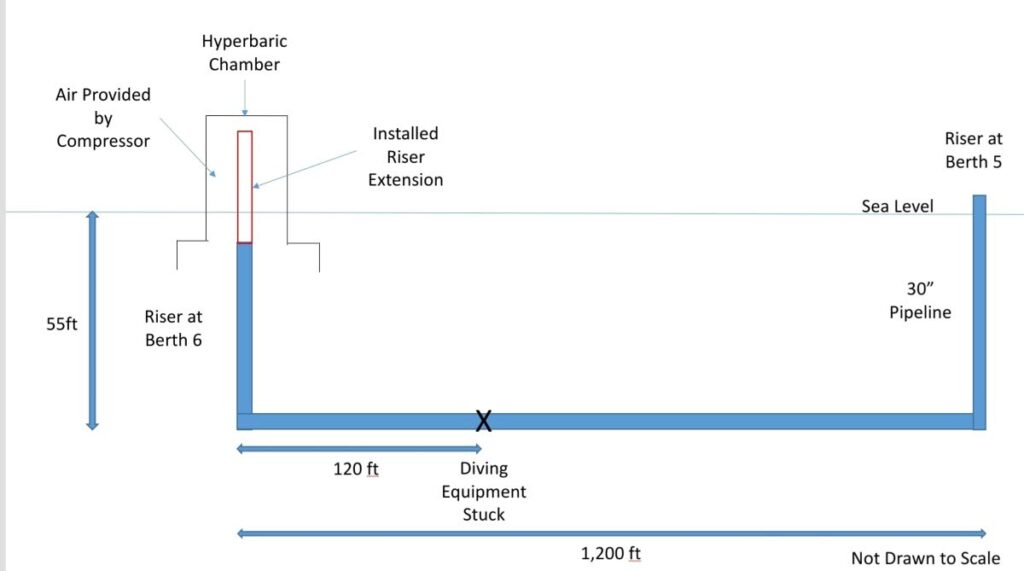Young gives blow by blow account of Paria mishap

ENERGY Minister Stuart Young said four divers were lost when they had been working inside an air-filled or hyperbaric chamber when they were sucked down underwater into a U-shaped pipeline with a 55-foot vertical drop, with diving equipment later recovered 120 feet along the pipeline's horizontal section.
Displaying a diagram, he said, "I'm here to cast no judgement, no defence on anyone who is involved in the operation, but I think we the citizens – especially the families – need to have a graphic illustration of exactly the site, and scene and scenario that we are dealing with."
He described the offshore installation as two pipes coming up to above sea-level, known as berth 5 and 6.
Young said five men were inside a hyperbaric chamber atop berth 6 last Friday, in the Gulf of Paria, to test work done over the past week installing nuts into the pipeline to fix a leak. In the group was Christopher Boodram who was the team's rescue diver and hence was wearing his oxygen tanks, watching the four men work. He was the sole survivor who was rescued.
Young said the structure the men were working on included a riser – presumably a vertical pipe added to a vertical section of pipeline – and attached to the riser were two flanges, one constructed of metal and rubber, and the other an inflatable item.
"From what we can gather at this stage, unfortunately when the first one (flange) was removed something took place that created a suction, sucking the five divers in from what was an air-chamber into this 30-inch pipeline.
“I thought it important that we understand that at this berth 6, which is where the work was taking place, that this suction came in and something happened. There is then 1,200 feet running at the bottom across, parallel to the sea-level surface, and again it connects with an elbow – the riser at berth 5."
He said people at the site got remotely operated vehicles (ROVs) from Shell, but these could not enter the pipeline and underwater cameras were used instead.
"They met an obstruction, that was diving equipment stuck. So far, I've been informed that the thought process was that the diving equipment is two air tanks that men were carrying on their backs. That unfortunately blocked the ROV and the camera systems from going any further to assist in the location of the men."
Young reckoned there was still some residual fuel in the pipeline, meaning any rescue could not be as simple as just diving down.
"So the teams continue to work with the outside experts, LCMS (a sub contractor employing the divers) and Paria together to come up with options on how best to get past what you saw was those obstructions in the pipeline, the 1,200 feet."

Comments
"Young gives blow by blow account of Paria mishap"